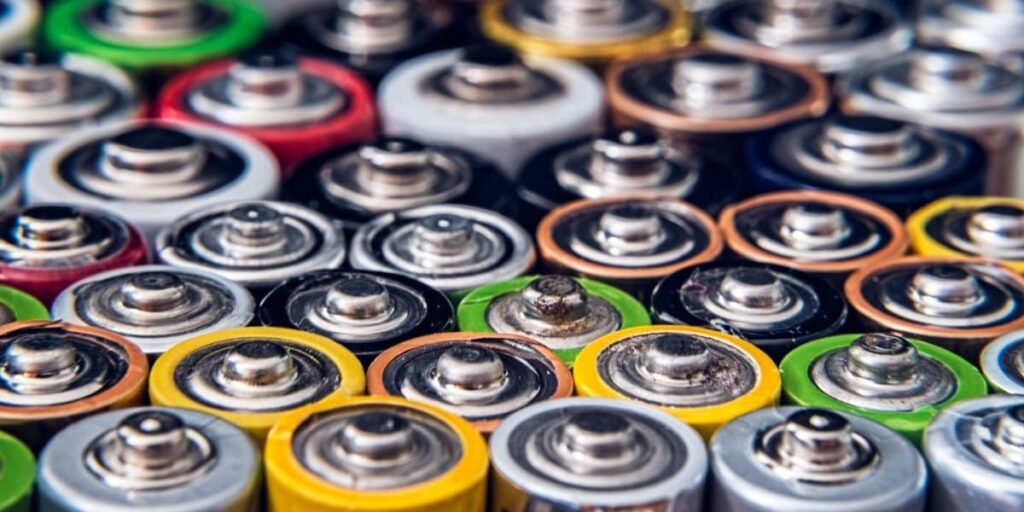Statistics are a powerful way to discover new facts about the world and also to either confirm or deny trends. They offer a window into the constant and rapidly changing state of our world, and the behavior of the humanity within it.
We’re familiar with the fact that the nature of the internet has caused many people to view statistics with great skepticism. In light of this, we’ve cited all of our sources at the bottom of this blog post so you can check them out if you want.
We’ve compiled more than 70 statistics just for this post, and we hope you get a lot out of them. Without further ado, let’s jump in!
Overview:
- Recycling Statistics
- Plastic Recycling Statistics
- Electronic Recycling Statistics
- Cell Phone Recycling Statistics
- Battery Recycling Statistics
- Water Statistics
- Clean Water Statistics
- Water Conservation Statistics
- Water Usage Statistics
- Drinking Water Statistics
- Plastic Water Bottle Statistics
- Reusable Water Bottle Statistics
- Water Consumption Statistics
- Water Safety Statistics
- Environmental Statistics
- Environmental Issues Statistics
- Vegan Environmental Statistics
- Miscellaneous Statistics
- Glass Recycling Statistics
- Aluminum Recycling Statistics
- Cardboard Recycling Statistics
- Paper Recycling Statistics
- More Miscellaneous Statistics
- Frequently Asked Questions About Environmentally-Related Statistics
Recycling Statistics
Recycling the materials that your consumer goods come in is a noticeable step towards living a more eco-conscious lifestyle. It encourages less focus on a brand’s aesthetics and more on the performance or quality of that brand.
There are lots of facts about recycling you may not have known about. Check out some of the wildest ones here:
- Recycling one plastic bottle saves enough energy to power one standard light bulb for four hours. (ArroWaste)
- About 1 billion trees’ worth of paper is discarded every year in the United States. (RTS)
- You can save 3.3 cubic yards of landfill space by recycling one ton of paper. (RTS)
- Only 15% of all textiles in the United States are recycled on an annual basis. (RTS)
- The average piece of clothing used by a US consumer has a miserably short life of only three years. (RTS)
- As much as 95% of textiles that United States consumers use on a regular basis can be recycled. (RTS)
Plastic Recycling Statistics
Almost all nations around the world use plastic on a daily basis now. Plastic is useful for everything from food containers and drinking straws to medical devices and personal protective equipment (PPE).
Below are some of the most eye-opening plastic recycling statistics ever:
- Up to 2,000 gallons of gasoline can be saved by recycling one ton of plastic. (Custom Earth Promos)
- 2.5 million plastic bottles are used in the United States every hour. (Custom Earth Promos)
- The United States uses about 100 million plastic bags every year, and most of these are thrown out within 15 minutes of using them. (RTS)
Electronic Recycling Statistics
Electronics are ubiquitous in modern life. Except for the Amish and other remote tribes of people, just about everyone who’s old enough uses some type of electronic device.
Unfortunately, the human race has only recently started to prioritize electronics recycling. That’s good news, because there are lots of positive things that can take place when electronics are recycled more often.
Here are a few of the most interesting electronics recycling statistics:
- Unrecycled electronics are the world’s fastest-growing type of waste. (United Electronic Recycling)
- The United States could power about 3,600 homes for an entire year if consumers chose to recycle 1 million laptops. (United Electronic Recycling)
- Roughly $60 million in silver and gold that’s used in smartphone parts is discarded every year when Americans throw out their old phones. (IITSTech)
- Most American consumers only use their current cell phone for two years. (United Electronic Recycling)
- The US recycled 1 million tons of specific consumer electronics in 2017. (RTS)
- Power tools, lamps, TVs, cell phones, printers, video cameras, microphones, microwaves, ovens, and toasters are some of the most common examples of recyclable consumer electronics. (Miller Recycling)
Cell Phone Recycling Statistics
A cell phone is practically a modern-day necessity. We use it to communicate with family and friends, check our email inboxes, apply to jobs, discover restaurants, book travel, and so much more.
Unfortunately, a lot of cell phones don’t get recycled properly. We looked up the most mind-blowing cell phone recycling statistics so you can understand this aspect of the electronics industry better.
Check out these eye-opening facts:
- 152 million cell phones are disposed of every year in the United States alone. (bankmycell)
- Most United States consumers only use their cell phone for about 18 months despite modern cell phones and smartphones having a shelf life of about seven years. (bankmycell)
- The number of smartphones on planet Earth is growing at about five times the rate of the human population. (bankmycell)
- Less than 20% of all cell phones are recycled in the United States every year. (WasteCare) Some organizations estimate it’s only 10 to 15%.

Battery Recycling Statistics
Batteries are necessary for so many of the tools we use today, from our smartphones and flashlights to our laptops and cars. Here are some of the most interesting battery recycling statistics out there:
- Lead-acid-based batteries are recycled at a rate of about 90%. (University of Illinois LibGuides)
- Only about one percent of lithium-ion batteries are recycled every year. (Recycling Today, 2022)
- The global battery recycling market is expected to reach an annual compound growth rate of 11.23% by the year 2025. (Global Newswire)
Water Statistics
Water is a necessity for daily life. It’s an odorless, colorless, tasteless liquid that humans, animals, and plants can’t go without.
These facts invariably mean water is closely studied, monitored, and maintained. We researched the most interesting water statistics, including everything from clean water and water usage statistics to plastic water bottle and water safety statistics. Keep reading to discover this era’s most fascinating water statistics.
Clean Water Statistics
Clean water is essential for animal and human life as well as most plant life. Below are some of the most interesting points about clean water on planet Earth:
- Currently, only one percent of the world’s drinkable water is accessible by humans. (Clean Cool Water)
- Three in four people globally have access to a safely-managed water source. (Our World In Data)
- 96% of people in North America have access to at least one safe drinking water facility. (Our World In Data)
Water Conservation Statistics
Given rising sea levels, increased geopolitical tensions, and rapidly changing weather patterns, water conservation has become a rather hot topic. Here are some interesting water conservation statistics to know:
- 40% of the United States’ surface water is in Alaska. (Clean Cool Water)
- One in 10 people in the contiguous United States don’t have regular access to clean and safe drinking water. (Clean Cool Water)
- 37 gallons of water are used in the average bath. (Think H2O Now)
- 100 gallons of water can be saved per day by repairing a leaky faucet. (Think H2O Now)
Water Usage Statistics
Water is used globally every day, for everything from growing crops and washing produce to washing dishes and so much more. Here are some of the most interesting water usage statistics we could find:
- Enough people believe that water shortages will become increasingly common that water futures are now bought and sold in much the same way as stocks. (Clean Cool Water)
- The typical family in the United States uses 300 gallons of water per day, just at home. (EPA)
- 106 gallons of water are required to produce just one ounce of beef. (Clean Cool Water)
Drinking Water Statistics
Everyone needs drinking water every day, whether they get it from their tap, bottled water, restaurants, stored water, or all of the above. Since water is one of the biggest global needs, there are a lot of eyes on it.
Here are some super interesting drinking water statistics we came across:
- Every $1 invested in clean water and toilets generates $4 in increased global productivity. (World Health Organization / Water Aid)
- 71% of schools around the world have clean water. (World Health Organization / Water Aid)
- Out of the Earth’s total surface water, less than two percent of it is fresh water. (Think H2O Now)

Plastic Water Bottle Statistics
Plastic water bottles are both a facet of modern life and also one of the most disposed-of items. While they’re convenient for large events and traveling internationally, these days there’s not much of a reason for them anymore.
Here are some fascinating plastic water bottle statistics:
- Roughly 35 million plastic bottles are thrown away each year in the United States. That number is roughly equivalent to 10% of the United States’ population. (RTS)
- The average yearly savings from switching to plastic water bottles to reusable ones is $309 for Americans. (The Roundup)
Reusable Water Bottle Statistics
Reusable water bottles have skyrocketed in popularity and use during the last two decades. Generations that care about one’s stewardship of the Earth combined with cool designs means this product is here to stay.
Here are some of the best reusable water bottle statistics we found:
- The average US consumer can save 156 plastic water bottles every year by purchasing one reusable water bottle. (Earthday.org)
- Globally, the reusable water bottle market is expected to grow by 4.3% every year through 2030. (Grand View Research)
- The most popular material to make reusable water bottles out of is stainless steel, with 40% of consumers choosing this type. (The Roundup)
Water Consumption Statistics
In order to stay alive and well, a lot of water must be consumed. This is true for adults, children, animals, and plants. You may be surprised by just how much water is consumed on a regular basis. Here’s what the facts show us:
- Americans spend over $1 billion every year on sparkling water drinks at restaurants. (Clean Cool Water)
- Just under 10% of the United States’ daily water consumption comes exclusively from California. (Clean Cool Water)
- The average human being consumes about 30,000 gallons of water across their lifetime. (Illustrative Mathematics)
- 90% of humans had access to a water source within 15 minutes of their homes by the year 2017. (World Health Organization)
Water Safety Statistics
It’s just as important for water to be safe to drink as it is to be accessible. Water safety, especially at the municipal level, has become a more frequently discussed topic. Below are a few of the most interesting water safety statistics we found:
- Roughly 60% of community water systems in the United States use chlorine as part of their water treatment process. (Clean Cool Water)
- Waterborne viruses can be deactivated by ultraviolet (UV) lamps or lights. (Clean Cool Water)
- The most common molecule found throughout the universe is hydrogen gas, and the second most common is water, or H2O. (Water Purifiers)
Environmental Statistics
Environmental statistics provide a multifaceted view into the changes caused by human behavior. It’s a powerful field to learn about because there’s always new data being collected and shared.
We scoured the internet for some of the most thought-provoking environmental stats in several categories. Keep reading to discover them for yourself.

Environmental Issues Statistics
Preserving the environment not just for Earth’s current inhabitants but also future generations is a growing interest for millions of people. As such, it’s helpful to know what data shows regarding various environmental issues.
Here are some of the most eye-opening and captivating environmental issues statistics we’ve come across:
- There’s an estimated 5.25 trillion pieces of discarded plastic in the ocean. (Ocean Crusaders)
- An estimated 780 million people globally still lack access to clean drinking water. (Alliance Disposal)
- Cigarette butts are the most common land-based form of waste globally, amounting to roughly 175,200 tons of garbage annually. (Pawsome Advice)
- The United States’ demand for water and energy is expected to grow by 50% between 2020 and 2030. (Pawsome Advice)
Vegan Environmental Statistics
Transitioning from a diet that involves meat and animal products to one that’s driven exclusively by plants has taken the world by storm. Food Revolution reports that between 2004 and 2019, the number of people in the United States eating vegan rose by 188%!
This figure alone demonstrates that plant-based eating and vegan individuals are here to stay. Below are some of the most interesting vegan environmental statistics available:
- The global meat and dairy industry is responsible for 70% of greenhouse gas emissions. (Pawsome Advice)
- The global factory farming industry is responsible for 37% of global methane production. (Pawsome Advice)
- About half of all water used in the United States is used to raise animals as food. (Culinary Schools)
- 30% of the Earth’s total land mass is used to raise animals as food. (Culinary Schools)
- The animal agriculture industry requires 16 pounds of grain to produce one pound of meat. (Culinary Schools)
- A vegan diet’s greenhouse gas emissions are seven times lower than that of a meat eater’s diet. (Culinary Schools)
Miscellaneous Statistics
In our quest to find the most mind-blowing and thought-provoking environment statistics, we came across multiple stats that didn’t neatly fit in other categories. Keep reading for some of the most interesting and miscellaneous environment-related statistics.
Glass Recycling Statistics
Glass is one of the most recycled and recyclable materials in the entire world. It has unlimited shelf life, can be repurposed, and is easy to recycle if need be. Check out these amazing glass recycling statistics:
- United States consumers recycle about 31% of glass products every year. (EPA)
- Five percent of landfill waste consists of glass. (Tabla’s Creek)
- Glass is one of the few products that can be recycled in perpetuity without any loss in end-product purity or quality. (Glass Packaging Institute)
- Every time 1,000 tons of glass is recycled, about eight new jobs are created. (Glass Packaging Institute)
- For every six tons of recycled glass used to make fresh glass, carbon dioxide emissions are reduced by one ton. (Glass Packaging Institute)
Aluminum Recycling Statistics
Aluminum is one of the most commonly used products today. It’s used for everything from food takeout and beverage containers to consumer electronics and everyday household appliances.
Here are some awesome aluminum recycling statistics:
- Aluminum cans are the most commonly recycled item in the United States. (ArroWaste)
- 620,000 tons of aluminum are recycled annually in the United States alone. (RTS)
- Roughly 123,000 aluminum cans are recycled in the United States every minute. (Lehigh County Solid Waste Management)
- An aluminum can can go from the date it’s recycled to being used in a brand new product within a 60-day span. (Middle Georgia State University)
Cardboard Recycling Statistics
Cardboard is still one of the most commonly recycled items in the United States and the world as a whole. This makes it easy for businesses to ship products in recycled materials which is definitely helpful for reducing waste.
Check out these cool cardboard recycling statistics:
- In the United States, cardboard boxes are recycled at a rate of 91% or higher. (American Forest and Paper Association)
- The United States recycled 46 million tons of paperboard and paper in 2018. (EPA)
- More than 90% of all consumer products in the United States are shipped in some type of cardboard. (Generated Materials Recovery)
- Corrugated cardboard can be recycled up to seven times before it loses its reusability. (Generated Materials Recovery)
Paper Recycling Statistics
Recycling paper is an activity that about 68% of people engage in. Beyond that, there are plenty of other fascinating paper recycling statistics out there. Here are the coolest:
- More than one third of all paper created is made out of recycled fiber. (ArroWaste)
- The typical American household disposes of 13,000 individual pieces of paper in a single calendar year. (Custom Earth Promos)
More Miscellaneous Statistics
- Steel is the most recycled item in the world. (Napa Recycling)
- The average amount of waste per person, per year that goes into a landfill is about 1500 pounds. (ArroWaste)
Frequently Asked Questions About Environmentally-Related Statistics
Reading about environmental statistics really gets the mind moving. At this point, you may have more questions than answers and that’s completely normal.
We looked up the most frequently asked questions about environmental data so you can skip right to the good stuff. Check out the questions and answers below:
What Do You Mean By Environmental Statistics?
On the whole, environmental statistics is the process of collecting, researching, studying, compiling, reporting on, and sharing numerical data related to the environment.
What Do Environmental Statisticians Do?
Environmental statisticians are involved in writing, editing, reviewing, reporting, sharing, and updating journals and articles about the soil, air, water, animals, humans, and human activity, as each of the aforementioned pertains to the environment.
What Are 3 Popular Environmental Issues Going On Today?
Three of the most widely discussed environmental issues occurring today include ocean pollution, global warming, and deforestation. Environmental researchers continue to report on the degree to which human activity is polluting the ocean worldwide, as well as the effects of human behavior on global warming. Additionally, deforestation is a major concern as developed nations lean more heavily on a variety of both renewable and non-renewable resources that rainforest regions have plentiful supplies of.
Looking for a way to do your part for the Earth without sacrificing product quality or longevity? We make the highest quality hybrid, certified organic mattresses without the prices luxury products are known for. Shop today!
Recycling fact sources:
- ArroWaste
- A1 Facts
- IITSTech
- EPA
- Clean Cool Water
- Illustrative Mathematics
- Ocean Crusaders
- Pawsome Advice
- Culinary Schools
- RTS
- Miller Electronics
- Bankmycell
- University of Illinois LibGuides
- Globe Newswire
- Glass Packaging Institute
- Middle Georgia State University
- American Forest and Paper Association
- Generated Materials Recovery
- Our World In Data
- Think H2O Now
- Water Aid
- Earth Day
- Grand View Research
- The Roundup
- Napa Recycling











